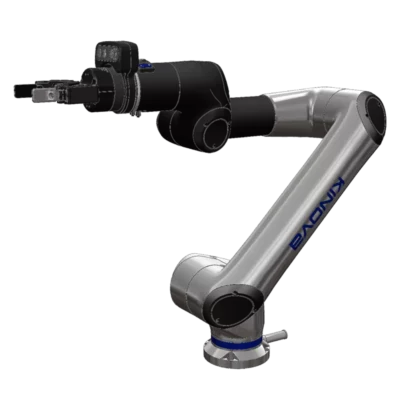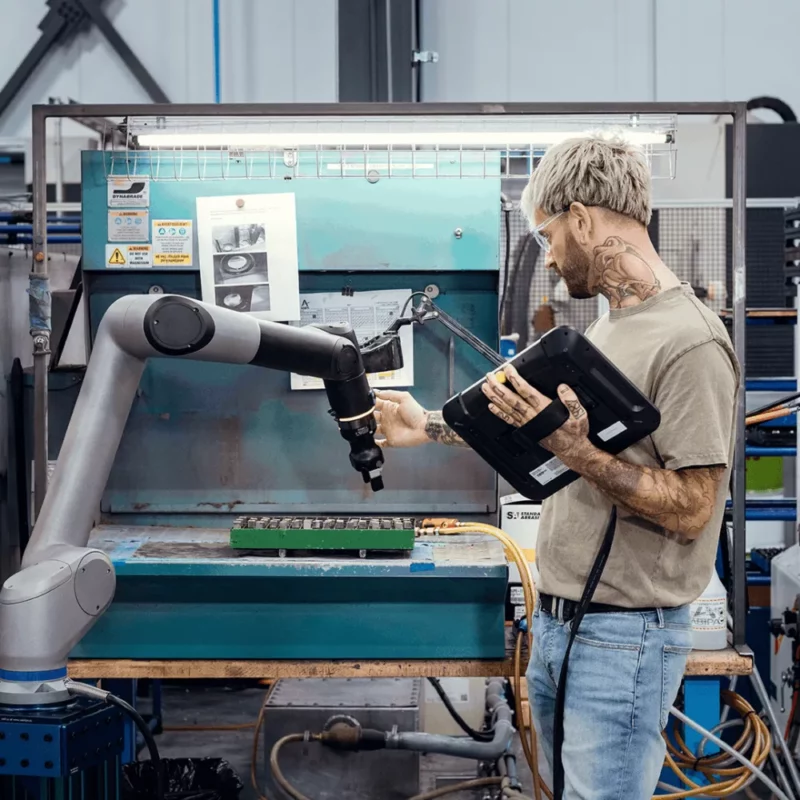“Link 6 is a new generation industrial robot designed for all businesses looking to benefit from automation. Featuring state-of-the-art technology that enables greater daily efficiency, the collaborative robot also improves the quality and consistency of production results.”
For more than 15 years, Kinova has been on a mission to break human limits and achieve remarkable things. They are leaders in creating robots. And now, they’ve gone even further by introducing the Link 6, Canada’s first collaborative industrial robot.

Link 6 Robot’s Impressive Features:
The Link 6 collaborative robot boasts an impressive array of specifications that set it apart from the competition. With a payload capacity of 6 kg (13.2 lbs), it enables the handling of substantial objects with ease. Operating at a maximum speed of 1.65 m/s (5.41 ft/s), it swiftly accomplishes tasks while minimizing cycle times. Its extensive reach of 1000 mm (39.4 in) ensures accessibility to various workspaces, while its joints offer a remarkable rotation of ± 360°. With a versatile movement range encompassing 6 degrees of freedom, the Link 6 is truly a marvel in the world of robotics.
Kinova’s Link 6 robot has many cool features. One is its user-friendly design, which makes it easy for everyone to use. It has a simple interface and can handle errors well, making it easy to learn and start using. It can also be guided manually, making it accessible to lots of users.
Kinova’s Idea for Link 6:
Kinova worked hard to change how people work together in industries. They put a lot of thought into making Link 6. This robotic arm is a big change in the market. It’s made for both people who know a lot about robots and those who are new to them.
Embracing AI and Collaborative Robotics
The Link 6 robot stands out because of its advanced controller. This controller has powerful artificial intelligence and collaborative robotics capabilities. It’s cutting-edge technology with a lot of processing power and memory. It’s also ready for the future, as you can add more power (optional GPU) for upcoming AI solutions while staying compact.
Boosting Productivity and Efficiency
The Link 6 robot is here to make manufacturing better. It can speed up production, improve product quality, and make things more predictable. This also means lower costs and less space needed for production, bringing in a new era of smarter manufacturing.
Control Made Easy: The Wrist Power
The Link 6 robot comes with a versatile wrist that makes it easy to control and efficient. It has a colorful ring to show its status, so you can keep an eye on it. It also has built-in ways to connect to other industrial stuff, making things smoother.
Customized for You:
Kinova made the Link 6 robot modular, so you can change it to fit your needs with special add-ons. It can work with different grippers, and it’s easy to program for different tasks. This helps you make the most of the Link 6 quickly.
A Peek into the Future of Collaborative Robots:
With the Link 6 robot, Kinova is leading us into a future where collaborative robots have tons of potential. They’re using advanced tech, making them easy to use, and letting people customize them. This sets the stage for a future where robots change how we work, making us more productive and innovative.
To learn more about Kinova’s Link 6 Cobots.
Are You Looking For A System Integrator?
Join our community to stay updated on the latest advancements in collaborative robotics and connect with like-minded professionals! Explore more at Qviro Community.
